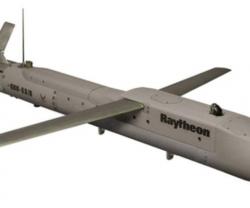Not so long ago, cyber warfare was the stuff of science fiction; but there is growing evidence of the potential risk posed by deliberate militaristic attacks on computer systems and networks. Writing in the current issue of the Journal of Strategic Studies, John Stone, Senior Lecturer in the Department of War Studies, King’s College London, is in little doubt that cyber attacks could constitute acts of war – as the title of his article “Cyber war will take place!” clearly suggests. However, he raises the very pertinent point that the new threat of cyber attack should make academics - and indeed all citizens – question current perceptions of “war”:
“Efforts to determine whether cyber attacks should be considered acts of war, or whether they are better understood as criminality, espionage, or sabotage etc., are hampered by our loose understanding of what war itself amounts to. More specifically the means of war, whether construed as force or violence, remain under-explored and under-specified by strategic theorists. As a result, these terms are typically used both loosely and interchangeably, undermining their value as conceptual tools in the process.”
Without a clear definition of this new phenomenon there is a real risk that the media and politicians, and therefore also the general public, will label any malicious act involving a computer and a network “cyber warfare”. That could result in an apparent escalation in attacks, whereas in reality the risk of cyber warfare is considerably smaller.
In “The Proliferation of Cyber warfare Capabilities and Interstate War, Redux: Liff Responds to Junio”, a response to critics of a previous article, Adam Liff maintains that cyber warfare is “… Computer network attacks with direct political and/or military objectives … distinct from cyber espionage, hacking, and crime”.
Liff, a doctoral candidate at the Department of Politics, Princeton University, writes: “Claims about the supposedly grave implications of new technologies for interstate war often possess neither a clear grounding in international relations theory nor a consideration of issues of strategic logic, bargaining and coercion. This led to what I believed (and still believe) to be an exaggerated assessment of the alleged ‘game-changing’ effects of the emergence of the possibility of its disruptive effects on international peace and stability.”
The Journal’s “cyber roundtable” also includes:
- “Cyber War is Inevitable (Unless We Build Security In)”, by Gary McGraw (pp. 109–119)
- “Offensive Cyber Weapons: Construction, Development, and Employment”, by Dale Peterson (pp. 120–124)
- “How Probable is Cyber War? Bringing IR Theory Back In to the Cyber Conflict Debate”, by Timothy J. Junio (pp. 125–133)
- “More Attacks, Less Violence”, by Thomas Rid (pp. 139–142)
These, together with the articles by Stone and Liff, represent an excellent example of the Journal’s groundbreaking and influential approach to the subject. As Liff writes:
In addition to the cyber roundtable, issue 1 also features free content, including the Amos Perlmutter Prize Essay “The 1983 Nuclear Crisis – Lessons for Deterrence Theory and Practice”, by Dmitry Dima Adamsky (pp. 4–41), “Competitive Strategies against Continental Powers: The Geopolitics of Sino-Indian-American Relations”, by Evan Braden Montgomery and “Political Scientists and Historians in Search of the Bomb” by Scott D. Sagan & the late Kenneth N. Waltz, one of the most eminent political scientists of the twentieth century who sadly passed away earlier this month. (Journal of Strategic Studies, Vol. 36, Issue 1, Published by Routledge, Taylor & Francis)






















